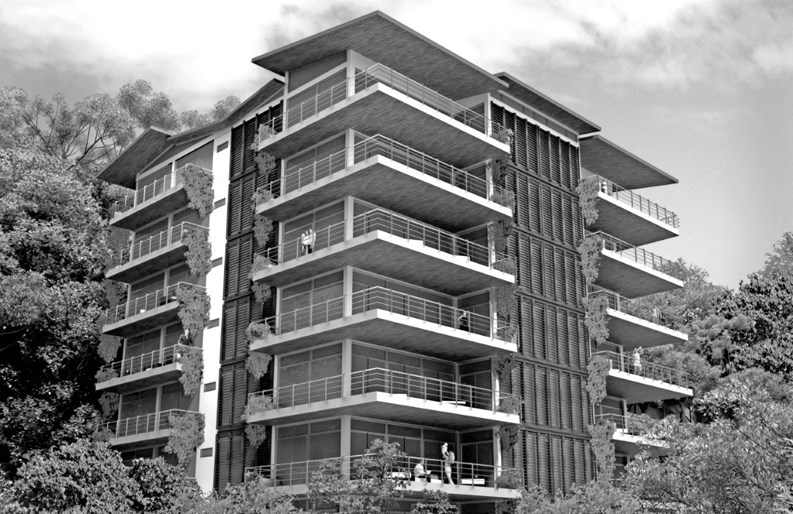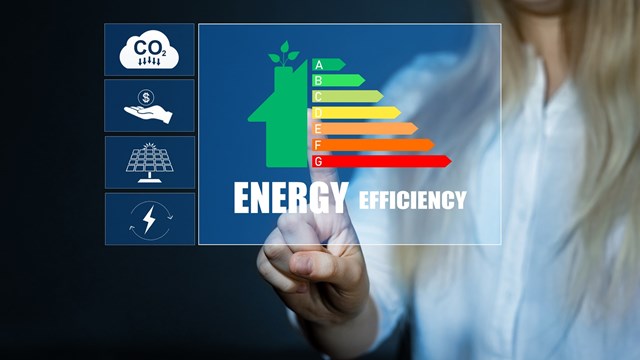If one wants to ascertain the state of the green building industry, shared—or “fractionally owned”—vacation condos might be a good place to start.
While many homebuyers will settle for an uninspiring exurb lot near a convenient highway entrance for their home, vacation homes are something different. Second homes often reflect more of their owners’ aspirations and ideals. When purchasing vacation property, pristine landscaping and luxury amenities have always been selling points, but in recent years, environmentally focused “green” features have attracted the educated, affluent buyer who is the bread and butter of the second home market.
But how is the market for environmentally friendly second homes holding up in the face of the current lengthy recession? Is “green” still the must-have amenity or feature that can command a premium price?
“The green movement was gaining a lot of momentum until the fall of 2008. I think it’s still there, but it’s not the primary [buying] decision factor that it was,” says Perry Williams, developer of the Maine Resort Club, a fractional ownership development in the Sebago Lakes region of that state.
Williams expresses a growing realization among developers—that while green features are still important, they have been overtaken by price considerations by those weighing vacation condo purchases. And this isn’t just impacting properties in New England and the Eastern Seaboard—an informal survey of shared vacation condo marketing from around the Americas illustrates how this new reality is settling in.
Partnered with Audubon
The developers of Spruce Peak at Stowe Mountain Resort in Stowe, Vermont, have assiduously polished the project’s environmental credentials. They have partnered with the Audubon Society on various aspects of the resort and picked up a number of environmental awards for the 35-acre, 500-unit development situated amid thousands of acres of conservation land.
“We’ve worked with dozens of groups in the permitting process, to understand the [area] stakeholder’s goal of keeping the rivers clean and minimizing sprawl,” says Walter Frame, vice president and director of development at Spruce Peak.
Numerous aspects of the community reflect the green development and planning process. The slopes of Spruce Peak’s golf course were designed to work with the natural contours of the land, and there is a buffer between it and the conservation land, which serves as a bear migration route. Instead of conventional granular fertilizer, the golf course distributes liquid fertilizer through its irrigation system, minimizing leakage into the area’s ground water.
The project’s homes—a mix of duplex townhouses, single family homes and eighth-share fractionals starting at $359,000 for 1,975-square-foot two-bedroom units—feature a variety of green features. All the homes have low-E windows and have been carefully sited for maximum solar heat gain.
Heat recovery systems take energy normally emitted from mechanical rooms and recycle it for use in living areas. Waterless urinals are used in the golf clubhouse and base lodge, and the electric systems were designed with input from the non-profit Efficiency Vermont to exceed local building code standards for power savings.
In talking about the cost of incorporating green design at Spruce Peak, Frame express a theme that has been pushed to the front these days: being green isn’t anywhere near as expensive as people think.
Differentiating between month-to-month operating costs and upfront building costs, Frame says, “There are two parts: the construction and the operations. By building efficient and sustainable buildings,” says Frame, “you minimize operating costs for the owner.”
On the upfront side of Spruce Peak, Frame says “building smarter” helped bring down its green construction costs. For example, builders used Vermont Eastern white pine wood for trim and flooring instead of Western Red Cedar, benefiting local tree growers and sparing cross-county truck delivery costs. The golf course clubhouse was milled and framed from trees harvested from clearing the golf course.
All of the houses were sited to face south, and the living areas that residents frequent were placed on the south side of the building, resulting in a windfall of passive solar energy. “It doesn’t cost anything to rotate the building before you put it in the ground,” says Frame, who notes the placement of the community swimming pool was also carefully analyzed to maximize solar heat.
“We found it’s really not costing more [to build green], we’re just building smarter,” he says.
Green Materials in Stock
Green real estate consultant Michael Masters, who works with developers in southern Oregon, says green building costs are dipping thanks to a number of factors.
A recent 1,600-square-foot green home on a quarter-acre lot in Grants Pass, Oregon, recently was listed for $270,000—only $10,000 more than a similar non-green home in the same area, Masters says.
The reason for the narrowing gap between green and non-green home construction comes down to simple economics, Masters says, “This [green] home would have been $20,000 more two years ago because everything was special-order then.” Today, he notes, green caulking, paint, Energy Star appliances and recycled and/or sustainable building materials are now readily in stock at local supply houses and are “becoming the norm. I’ve seen the price for green coming down—I’m actually shocked by how much they’re coming down.”
The drop in the cost of green, says Masters, has coincided with a shift in buyer mentality—people are still looking for sustainable and environmentally friendly features, but they’re not as important a selling point as before the recession. “What they aren’t doing now is going out shopping and saying, ‘I want to buy a green house and I’ll pay any price,’” he says. “But if you have people who have a higher green consciousness and offer them two like projects, but one is being touted as being green and enables [the buyer] to support the environment, then that’s where they’re going to buy,” he says.
Builders for their part are saying, “‘Well, maybe I can’t win in the bidding war [with non-green houses] because I’m too invested in my land. I’m going to have to turn out a competitively priced product.’ But to make sure it sells, they want it to have green features,” Masters continues. The competitive advantage of green homes is now so compelling that “builders seem to be more willing to building a green home for speculation than a conventional home,” he says.
Construction Costs Near Zero
At Maine Lakefront Club in the Sebago Lakes region, construction costs are near zero because this fractional residence club sets out to buy existing premium lakefront residences and then retrofit—or “recycle”—them into eighth-share fractionals.
“The truly green concept of this is that one home satisfies eight families, instead of building eight homes that would sit empty three-quarters of thee time,” says Williams.
As of this summer, the Maine Lakefront Club has purchased its first home, a 5 ½ bedroom, 4,550-square-foot log home with lakefront access and sandy beach. Shares go for $275,000 and allow the owner 180 days a year of use, including pre-planned long-term reservations along with short-notice weekend stays.
Williams is now scouring the Sebago Lake region for additional homes that will allow members full use of 20 homes in total when the club is fully built out. When a potential property becomes available in the area, Williams, a pilot, takes his seaplane up for a good look at its proximity to the water and layout. If it looks promising, he’ll return by car for a closer inspection of the property.
The concept for the Maine Lakefront Club was born out of necessity, says Williams. Land around Sebago Lake is in extremely short supply and “most of the best spots were built on long ago,” he says.
Despite a down economy and less cash to purchase these getaway properties, buyers are still interested in premium lakefront residences, Williams continues. That interest led him to adopt the fractional business plan—which he says is new to the region. “The go-go days are behind us and this is a new economy—a new way of thinking about your second-home experience,” he says.
Eco-tourism Belt
Shared ownership of eco-friendly properties is by no means limited to the United States. In Costa Rica, a new 104-unit quarter-share fractional on the Pacific coast has been designed to appeal to the carbon consciousness of the greenest buyers.
Called Tranquilo, which means “calm” in Spanish—the development sits next to a lush stretch of tropical rain forest, a mecca for eco-tourists.
Green features in the units start with floor-to-ceiling glass with louvered windows that allow cross breezes, minimizing air conditioning use. Solar water heaters make the most of the tropical sun beating down on the development, which itself is situated within a 750-acre private wildlife preserve called Punta Leona.
The development’s landscaping utilizes all native plants—plants displaced during construction were saved and replanted on-site. Rainwater is collected for use in the Tranquilo swimming pool, and is mixed with on-site “gray water” for irrigation purposes.
Finally, the developer is throwing in an electric vehicle with each purchase, which owners can use during their stays.
Along with the sterling green credentials, Tranquilo developer Rick Valentine of San Diego-based Latitude Destination Properties says that value now plays a crucial role in second home-seekers’ buying decisions. Per square-foot prices at the Tranquilo development range from $350 to $450 for the studio and one-, two-, and three-bedroom units, which Valentine says is a bargain compared to similar shared ownership communities.
“In this day and age, people have gone back to, ‘Does it make good financial sense—is it a good deal?’” he says. “In the international market, while I think green has some level of importance, it’s just as important that [buyers] are getting a good deal, because people are obviously still reeling from the financial crisis. We’ve really positioned this as the intelligent ownership option, given the troubled times.”
So it would seem that both the economic downturn and the increasing awareness of our own impact on the planet have combined to lead prospective second homebuyers to demand both reduced cost as well as a reduced carbon footprint.
Jim Douglass is the managing editor of New England Condominium magazine, a Yale Robbins’ publication.







Leave a Comment